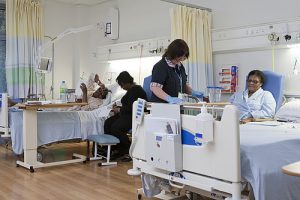
Modern healthcare is an industrial process just like any other. Whether we like it or not, when we go to a hospital for surgery we must submit to a process. Quite probably, dozens of individuals are going to get involved in our care. Some of those people will have direct continuous involvement in our care and others will have more peripheral roles – how do they all come together to provide a care package? Let’s find out how checklists help save lives.
Ideally the key personnel or managers, typically the consultants and doctors, will be able to quickly get an informed overview of a patient’s status as they move between wards and individual patients. Nursing staff who change from one shift to another will be able to track what’s happened to a patient while they’ve been off-shift. That sort of data recording and transfer of information that’s required is only possible, I suggest, by using checklists.
So it was that when I recently went into hospital for urgent tests, and subsequently major surgery, I found myself taking a great interest in the type of checklists that my care team used. I had many opportunities to note the type, detail and regularity of the data recorded and the subsequent decisions that were made based upon the data recorded in those checklists.
I guess I was something of a bore for the hospital staff because I asked many of them how they went about their jobs, what tools they used and what helped them the most in their work. I even asked them if they’d read Atul Gawande’s The Checklist Manifesto – and none had!
What fascinated me most, when I wasn’t dwelling on my own physical problems, was how everyone functioned by using checklists – even the cleaners. However, when I asked, none of the people I spoke to cited the checklist itself as a valuable tool for their work. It’s not that they didn’t think they were important, it was just that their use was so ingrained, so second nature to them, that they didn’t think about them as a ‘tool’ at all. I think that was a function of the high standard of training.
It was reassuring to me, as a patient, to see nursing staff checking to see what had been done while they’d been off-shift. It was reassuring to see each shift change being managed in the same way with care staff gathered at the end of my bed to discuss my status and immediate care needs. While it’s probably obvious in retrospect, I was amazed that they even recorded what I ate and, most significantly, when I said I didn’t want anything to eat at all.
I was confident, throughout my lengthy stay in the hospital, that everyone knew what needed to be done, where to go to record data, and where to find information about me if they needed it. I’m confident that the speed and nature of my recovery so far are due in no small part to the use of checklists.
I also suggest that the use of checklists gave the nursing staff the opportunity to ‘free up brain space’ and afforded them the time to use the softer skills of nursing such as listening and caring. Not only was I looked after physically, but my medical team also saved my life and I actually felt cared for – those feelings I have about my treatment might otherwise be described as customer satisfaction. It doesn’t take a great leap of imagination to understand how these benefits could be transferred into any industrial sector or process – even yours.
Want to learn more about Certainty Software? Click here.



